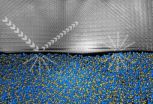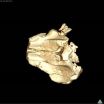(Press-News.org) ROCHESTER, Minn. — New research from Mayo Clinic shows that implementing a uniform method to care for lower-risk cardiac surgical patients improves outcomes, reduces patients' time in the hospital and lowers overall per patient costs by 15 percent. The study is published in the May issue of Health Affairs.
MULTIMEDIA ALERT: Video and audio are available for download on the Mayo Clinic News Network.
"In the high-acuity, full-service hospital, individual clinical judgment remains key, and some medical care demands this," says David Cook, M.D., a Mayo Clinic anesthesiologist and primary author of the study. "But if this philosophy is applied universally, the same medical problem could be approached in 10 different ways by 10 different physicians, leading to unwarranted variability in costs, quality and outcomes."
In 2009, practice leaders at Mayo Clinic initiated a practice redesign effort targeted at lower-risk cardiovascular surgical patients that would set clear expectations for their hospital care, improve patients' experiences and outcomes, and reduce overall costs. The group used stakeholder analysis, practice analysis and management tools such as Lean and Six Sigma to design the new model of care. Key elements of the model included:
Stratification of the patient population into lower and higher complexity to identify which patients could be cared for using the standardized model
New workflow paths that empowered nonphysician care providers to make decisions at the bedside
Co-location of patients with similar levels of acuity
Health IT tools to support work models and care delegation
"Our effort to disrupt the typical model of a full-service hospital surgery practice provides evidence of the power of a standardized care model to improve care value," Dr. Cook explains. "Instead of treating all patients as highly complex and requiring unique problem-solving, we found that 67 percent of our patients would be amenable to a new care model that achieved a high degree of predictability."
"For patients and families, uncertainty is a significant burden," he continues. "Now, we've made care predictable enough so that we can tell patients and families what they can expect, and this is tremendously important."
Dr. Cook says that it's critical to apply the right tools, care model and work model to the right patient population. Part of the reason that protocols or best practices fail, he says, is that providers may not follow them if they are not applied, with forethought, to the right patient population. He also stresses that persistent leadership and phased implementation of changes are critical for such initiatives to succeed.
INFORMATION:
Co-authors include Jeffrey E. Thompson, M.D.; Elizabeth Habermann, Ph.D.; Sue Visscher, Ph.D.; Joseph Dearani, M.D.; Véronique Roger, M.D.; and Bijan Borah, Ph.D. The Mayo Clinic Robert D. and Patricia E. Kern Center for the Science of Health Care Delivery supported this study by assessing outcomes and costs before and after the implementation of the new care model.
About Mayo Clinic
Recognizing 150 years of serving humanity in 2014, Mayo Clinic is a nonprofit worldwide leader in medical care, research and education for people from all walks of life. For more information, visit150years.mayoclinic.org, http://www.mayoclinic.org and newsnetwork.mayoclinic.org.
MEDIA CONTACT: Shelly Plutowski, Mayo Clinic Public Affairs, 507-284-5005,newsbureau@mayo.edu
New Mayo Clinic cardiovascular surgical care model improves care value, predictability and the patient experience
2014-05-06
ELSE PRESS RELEASES FROM THIS DATE:
College kids need to change unhealthy ways
2014-05-06
CHICAGO --- Parents, forget the comfort food! It's time to send your college students care packages of fruit, veggies and exercise gear instead.
A new study from Northwestern Medicine® and Northeastern Illinois University found that the majority of college students are engaging in unhealthy behaviors that could increase their risk of cancer later on. Racial minority students could be at an even greater risk, especially African Americans and Native Americans.
A shocking 95 percent of college students fail to eat the recommended amount of fruit and vegetables (five or ...
NeuroStar TMS therapy shows favorable outcomes compared to antidepressants for depression
2014-05-06
NEW YORK, May 6, 2014 – Neuronetics, Inc. announced today a new analysis of data at the annual meeting of the American Psychiatric Association that shows Transcranial Magnetic Stimulation (TMS) administered with the NeuroStar TMS Therapy System resulted in greater symptom improvement than next-choice conventional antidepressant medication among patients with Major Depressive Disorder (MDD) who failed to benefit from prior antidepressant medication. In a propensity-score matched analysis of data from two independent studies, patient-reported symptom outcomes measured by ...
Access to electronic health records may influence care
2014-05-06
Unlike medical records kept in paper charts, electronic health records (EHR) provide numerous access points to clinicians to review a patient's medical history. A new study has found access to electronic health records in acute care situations may influence the care given to that patient, and in some cases, failure to review the EHR could have adversely affected the medical management.
The findings are reported in the May 2014 edition http://content.healthaffairs.org/content/33/5/800.abstract of Health Affairs. John L. Ulmer, M.D., professor of radiology and chief of ...
Social workers can help patients recover from mild traumatic brain injuries
2014-05-06
More than a million people are treated for mild traumatic brain injuries in U.S. hospitals and emergency rooms each year. Yet few receive appropriate psychological and social follow-up care that can make the difference in whether or not they fully recover.
A University of Washington researcher has found that a 20-minute conversation with a social worker has the potential to significantly reduce the functional decline of those diagnosed with a mild traumatic brain injury.
The research is published in the April issue of Brain Injury.
Megan Moore in the UW's School of ...
Study shows that impulsivity is risk factor for food addiction
2014-05-06
(Boston) – Have you ever said to yourself that you would only have a handful of potato chips from the bag then, minutes later, realized you ate the whole thing? A recent study shows that this type of impulsive behavior might not be easily controlled – and could be a risk factor in the development of food addiction and eating disorders as a result of cellular activities in the part of the brain involved with reward.
The research, published online in Neuropsychopharmacology, was led by Boston University School of Medicine (BUSM) and conducted in collaboration with the University ...
Linking vascular inflammation to obesity and atherosclerosis
2014-05-06
A study in The Journal of Experimental Medicine shows that IκB kinase β (IKKβ) functions in smooth muscle cells to regulate vascular inflammatory responses and atherosclerosis development.
Inflammatory responses are the driving force of atherosclerosis, a process that involves the hardening and thickening of artery walls due to excess fatty deposits. IKKβ is a central coordinator of inflammatory responses that has been implicated in vascular diseases, but its role in atherosclerosis has been unclear.
Now, Changcheng Zhou and colleagues from the ...
Staying on task in the automated cockpit
2014-05-06
Automation in the cockpit is traditionally believed to free pilots' attention from mundane flight tasks and allow them to focus on the big picture or prepare for any unexpected events during flight. However, a new study published in Human Factors indicates that pilots may have a hard time concentrating on the automated systems that now carry out many of the tasks once completed by humans.
"The automated systems in today's cockpits assume many of the tasks formerly performed by human pilots and do it with impressive reliability," says Stephen Casner, coauthor of "Thoughts ...
Graphene for real-world devices
2014-05-06
Graphene, a one-atom-thick form of the carbon material graphite, has been hailed as a wonder material — strong, light, nearly transparent, and an excellent conductor of electricity and heat. But a number of practical challenges must be overcome before it can emerge as a replacement for silicon and other materials in microprocessors and next-generation energy devices.
One particular challenge concerns the question of how graphene sheets can be used in real devices.
"When you fabricate devices using graphene, you have to support the graphene on a substrate and doing ...
Cedars-Sinai researchers identify how heart stem cells orchestrate regeneration
2014-05-06
LOS ANGELES (EMBARGOED UNTIL NOON ET ON MAY 6, 2014) – Investigators at the Cedars-Sinai Heart Institute – whose previous research showed that cardiac stem cell therapy reduces scarring and regenerates healthy tissue after a heart attack in humans – have identified components of those stem cells responsible for the beneficial effects.
In a series of laboratory and lab animal studies, Heart Institute researchers found that exosomes, tiny membrane-enclosed "bubbles" involved in cell-to-cell communication, convey messages that reduce cell death, promote growth of new heart ...
Redescription of the oldest-known dolphin skull sheds light on their origins and evolution
2014-05-06
VIDEO:
This is the CT image of the skull of the holotype of Eodelphis kabatensis.
Click here for more information.
Dolphins are the most diverse family of living marine mammals and include species such as the bottlenose dolphin and the killer whale. However, their early evolution and fossil record has been steeped in mystery due to lack of good specimens. A new paper published in latest issue of the Journal of Vertebrate Paleontology re-describes the oldest species of dolphin ...


